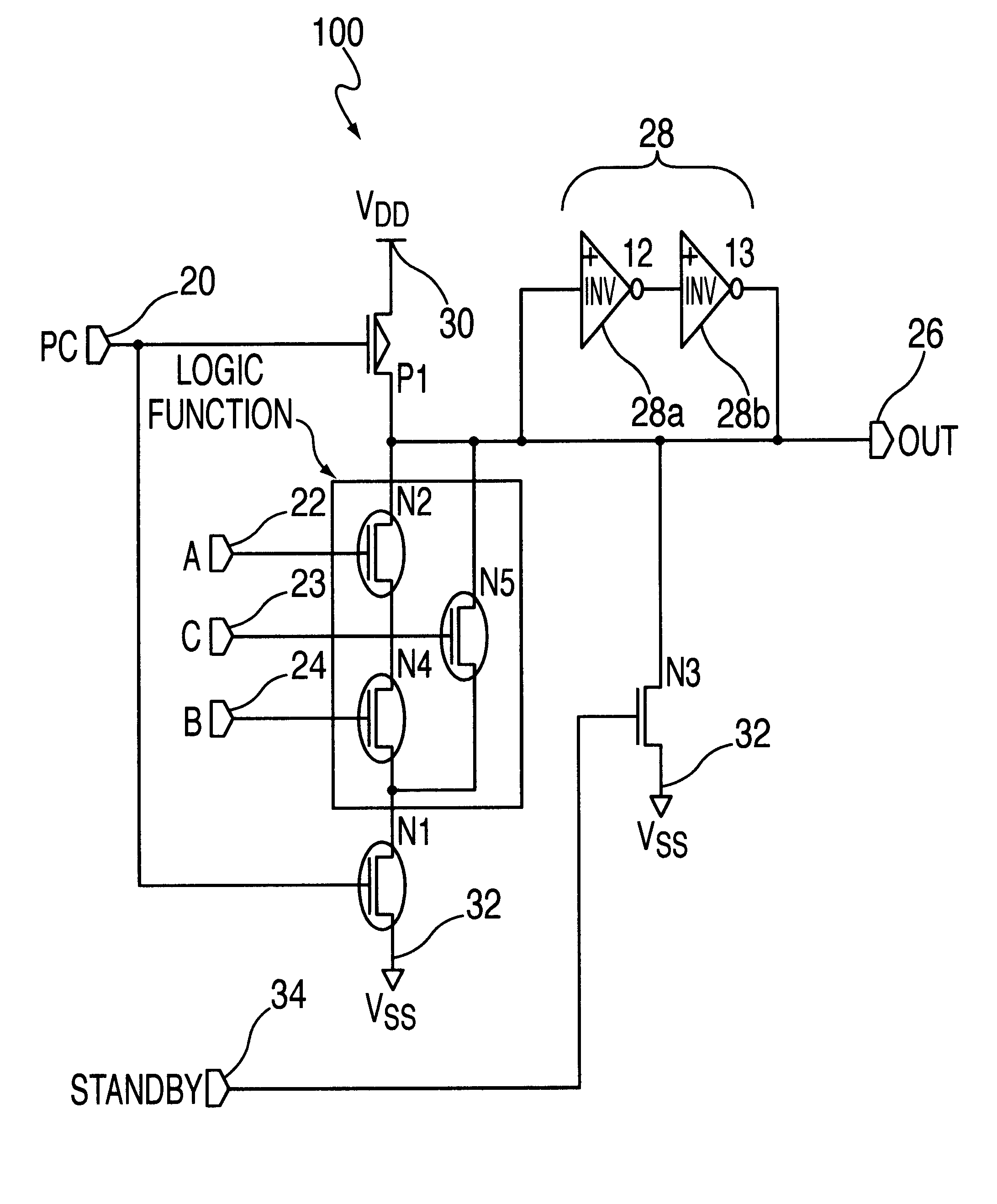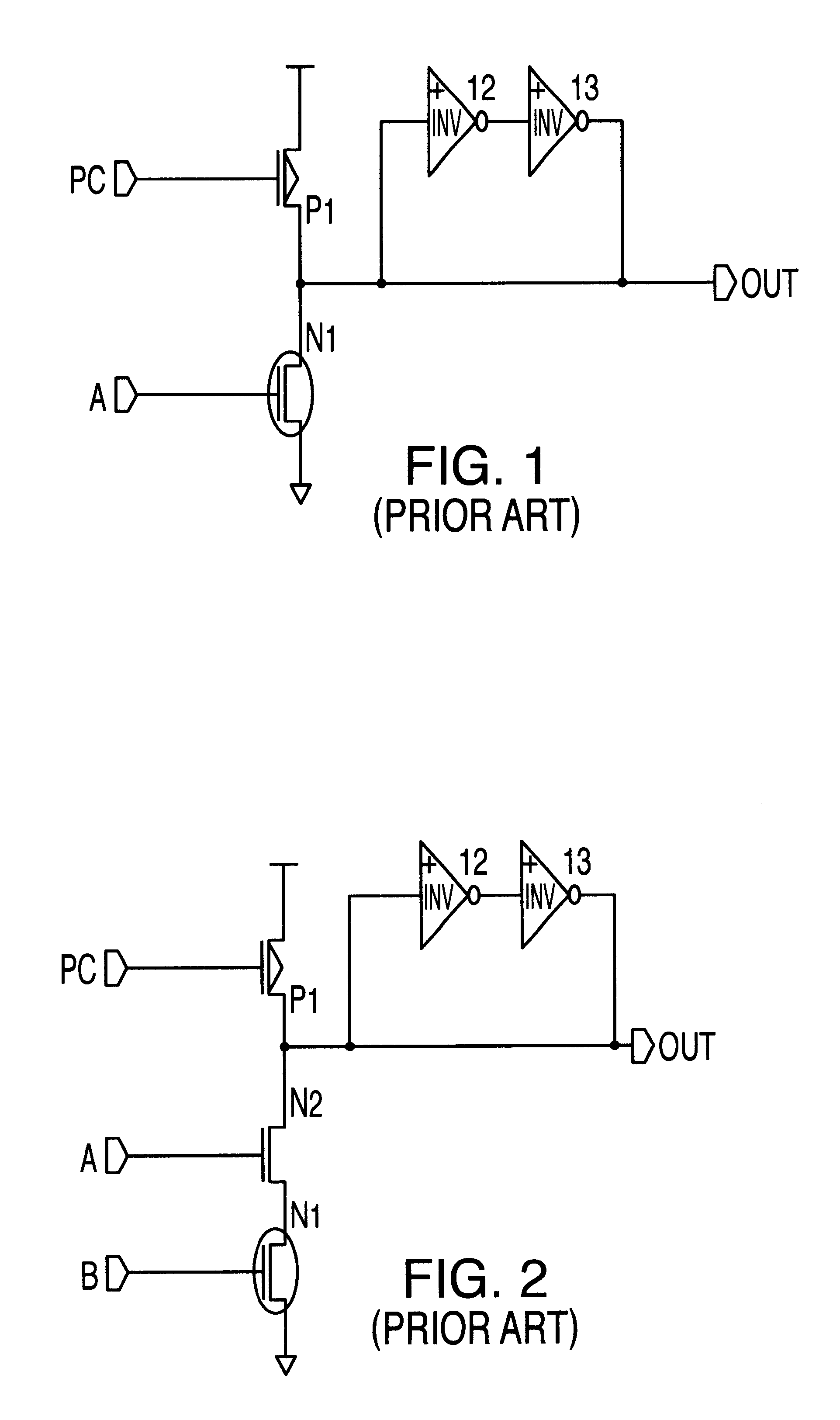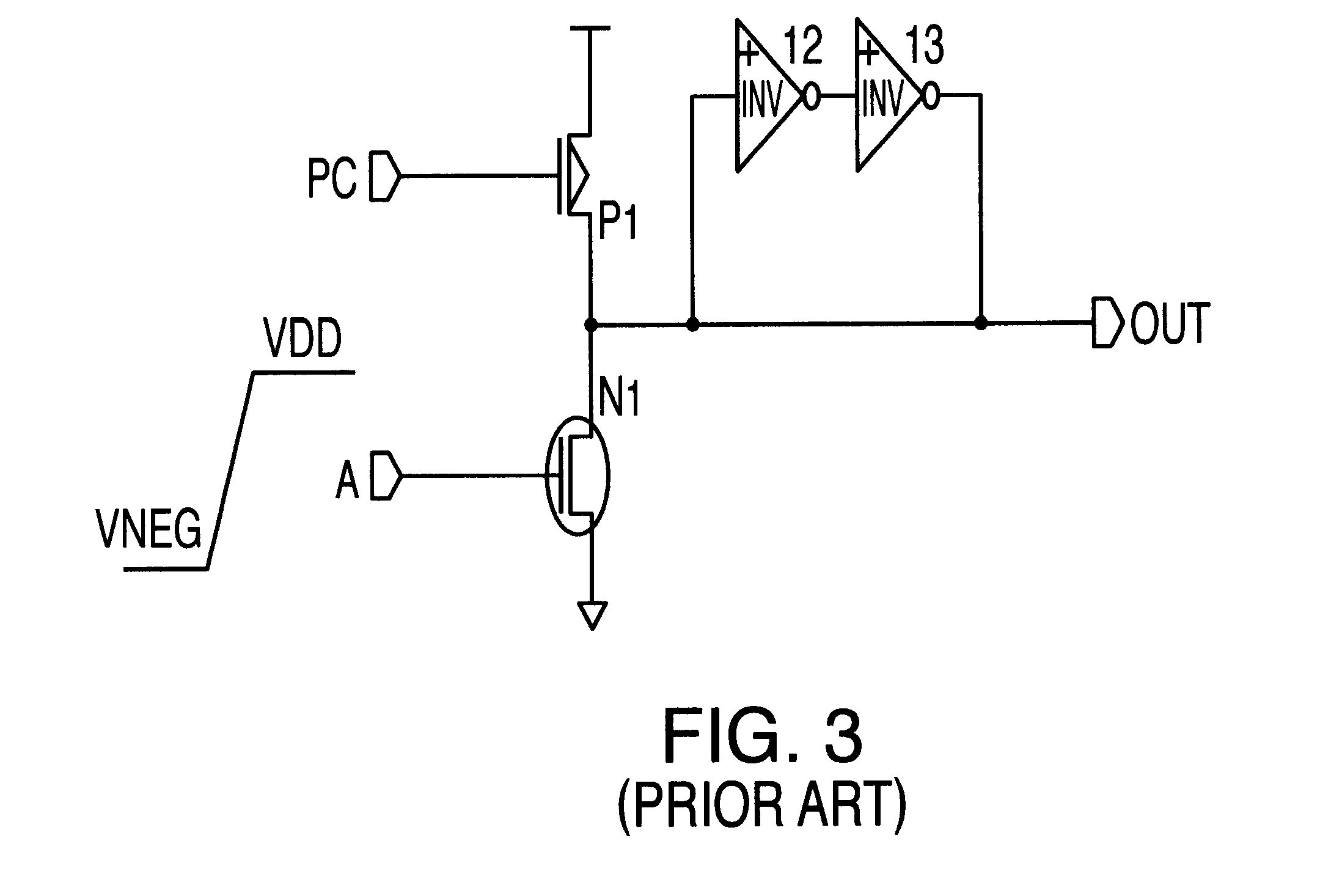Method of reducing sub-threshold leakage in circuits during standby mode
a technology of standby mode and sub-threshold current, which is applied in the direction of logic circuits, pulse techniques, digital storage, etc., can solve the problems of reducing the performance of the circuit, increasing the size of the circuit, and reducing the power requirements of the integrated circuit, so as to and minimize or reduce the sub-threshold current leakage
- Summary
- Abstract
- Description
- Claims
- Application Information
AI Technical Summary
Benefits of technology
Problems solved by technology
Method used
Image
Examples
first embodiment
FIG. 4 shows the present invention, which adds to a dynamic logic circuit 100 of the type used in a DRAM a device to discharge the output node to ground during standby mode. This dynamic logic circuit performs an AND-OR-INVERT logical operation (i.e., INPUT=A, B, C, OUTPUT=INVERT (A AND B OR C)) The circuit operates in a manner similar to that of FIG. 2, wherein transistor P1 is connected to the upper power rail 30 at V.sub.DD and the output at node 26 is precharged to V.sub.DD (logic level 1) by a negative active pulse PC applied at precharge node 20 coupled to the transistor P1 gate and to the transistor N1 gate. This occurs when pulse PC, initially at V.sub.DD (logic level 1) drops to Vss (logic level 0) at ground 32 for a predetermined time, e.g., 2-5 nanoseconds, and then returns to V.sub.DD and logic level 1. During the time pulse PC is at level 0, transistor P1 conducts and charges output node 26 to logic level 1, which in turn sets latch 28, made up of inverters I228a and 13...
second embodiment
FIG. 5 shows the present invention, which adds to a dynamic receiver 105 of the type used in a DRAM a device to discharge the output node to ground during standby mode. The circuit operates in a manner similar to that of FIG. 2, wherein transistor P1 is connected to the upper power rail 30 at V.sub.DD and the output at node 26 is precharged to V.sub.DD (logic level 1) by a negative active pulse PC applied at precharge node 20 coupled to the transistor P1 gate. This occurs when pulse PC, initially at V.sub.DD (logic level 1) drops to V.sub.SS (logic level 0) for a predetermined time, e.g., 2-5 nanoseconds, and then returns to V.sub.DD and logic level 1. During the time pulse PC is al level 0, transistor P1 conducts and charges output node 26 to logic level 1, which in turn sets latch 28, made up of inverters I228a and I328b, to hold logic level 1. The circuit then waits for addresses or signals at A 22 and B 24 to be asserted during the evaluation phase. The drain of standard thresho...
PUM
 Login to View More
Login to View More Abstract
Description
Claims
Application Information
 Login to View More
Login to View More - R&D
- Intellectual Property
- Life Sciences
- Materials
- Tech Scout
- Unparalleled Data Quality
- Higher Quality Content
- 60% Fewer Hallucinations
Browse by: Latest US Patents, China's latest patents, Technical Efficacy Thesaurus, Application Domain, Technology Topic, Popular Technical Reports.
© 2025 PatSnap. All rights reserved.Legal|Privacy policy|Modern Slavery Act Transparency Statement|Sitemap|About US| Contact US: help@patsnap.com



